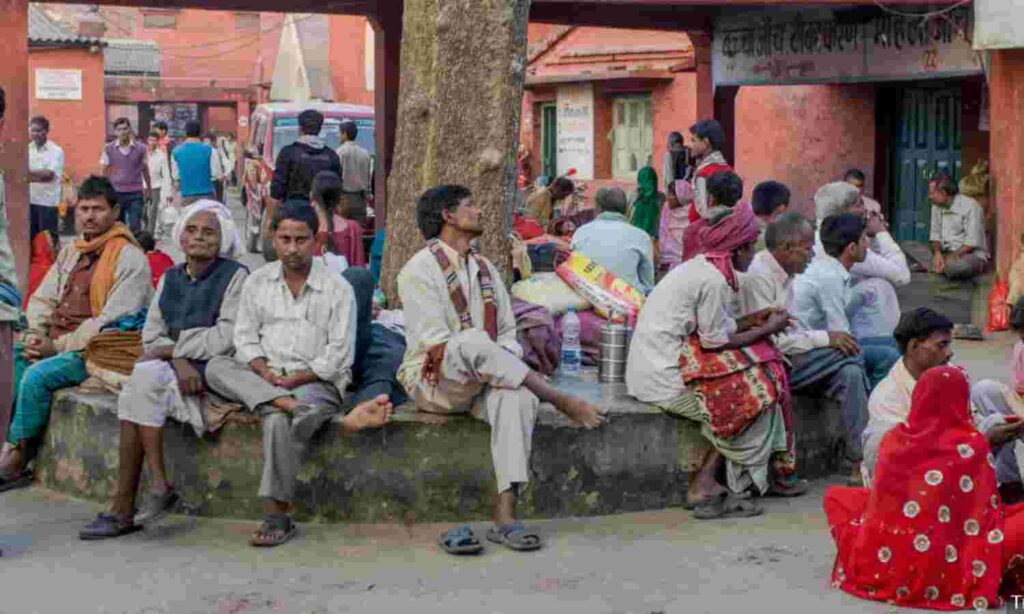In 2024, as India continues its march toward becoming an economic powerhouse, the journey remains uneven, with certain regions lagging significantly. The “Poorest States in India” represent areas where the light of prosperity is dim and requires focused intervention and sustained efforts. This analysis highlights the central challenges these states face, including high poverty rates, outdated economic structures, and the complexities of modernization. Addressing these issues is essential to understanding the nature of the economic stagnation that hinders progress. The purpose of this discussion is not merely to highlight the disparities but to foster a dialogue on how these divides can be bridged so that every corner of this vast, vibrant country can embark on a shared path of progress.
Top 5 Poorest States In India
1. Bihar
Bihar remains one of the poorest states in India, with 51.91% of its population experiencing multidimensional poverty as measured by the Multidimensional Poverty Index (MPI). This alarming rate of poverty stems from a combination of deep-rooted institutional challenges, widespread illiteracy, and inefficient agricultural practices. These structural issues are significant barriers to any meaningful development efforts in the state. Addressing these foundational problems is crucial for nurturing sustainable development and improving the quality of life for the people of Bihar.
2. Jharkhand
Jharkhand ranks as the second poorest state in India, with an MPI of 42.16%. The state’s poverty is exacerbated by low literacy rates, poor educational enrollment, high child mortality, and inadequate nutrition for children. These enduring educational and health challenges, which have persisted since Jharkhand was part of Bihar until 2000, continue to perpetuate high levels of poverty in the state. Targeted interventions in the education and health sectors, along with other areas that can improve the quality of life, are essential to reducing poverty among Jharkhand’s citizens.
3. Uttar Pradesh
Uttar Pradesh, with an MPI of 37.79%, is the third poorest state in India, just behind Jharkhand. This high MPI indicates that a significant portion of the state’s population is experiencing multidimensional poverty, encompassing factors such as health, education, and living standards. While there has been considerable progress in recent years, particularly in sanitation, nutrition, and access to basic services, much of Uttar Pradesh’s population still faces severe challenges.
4. Madhya Pradesh
Madhya Pradesh, with an MPI of 36.65%, is notable for its significant tribal population, which experiences poverty at more acute levels than other communities within the state. The rural poor, especially tribal communities, rely heavily on forest resources, highlighting the need for sustainable development strategies. These strategies should include policies that address the unique needs of these communities by increasing access to essential services and economic opportunities, thereby contributing to poverty reduction in the region.
5. Meghalaya
Meghalaya, with an MPI of 32.67%, is the fifth poorest state in India. The state faces significant challenges, including extreme malnutrition, inadequate health facilities, and poor educational infrastructure. A large percentage of the population also lacks basic necessities such as clean cooking fuel and electricity. Addressing the multidimensional aspects of poverty in Meghalaya requires comprehensive efforts aimed at improving health, education, and living conditions to elevate the standard of living for its people.
Conclusion
In 2024, the economic disparities in India remain stark, with regions like Bihar, Jharkhand, Uttar Pradesh, Madhya Pradesh, and Meghalaya standing out as the “Poorest States in India”. These areas are plagued by multifaceted poverty, underscoring the urgent need for targeted interventions and sustained efforts to uplift marginalized communities. Achieving inclusive growth and equitable development across all regions is essential to ensuring that the rising tide of India’s prosperity benefits everyone.


